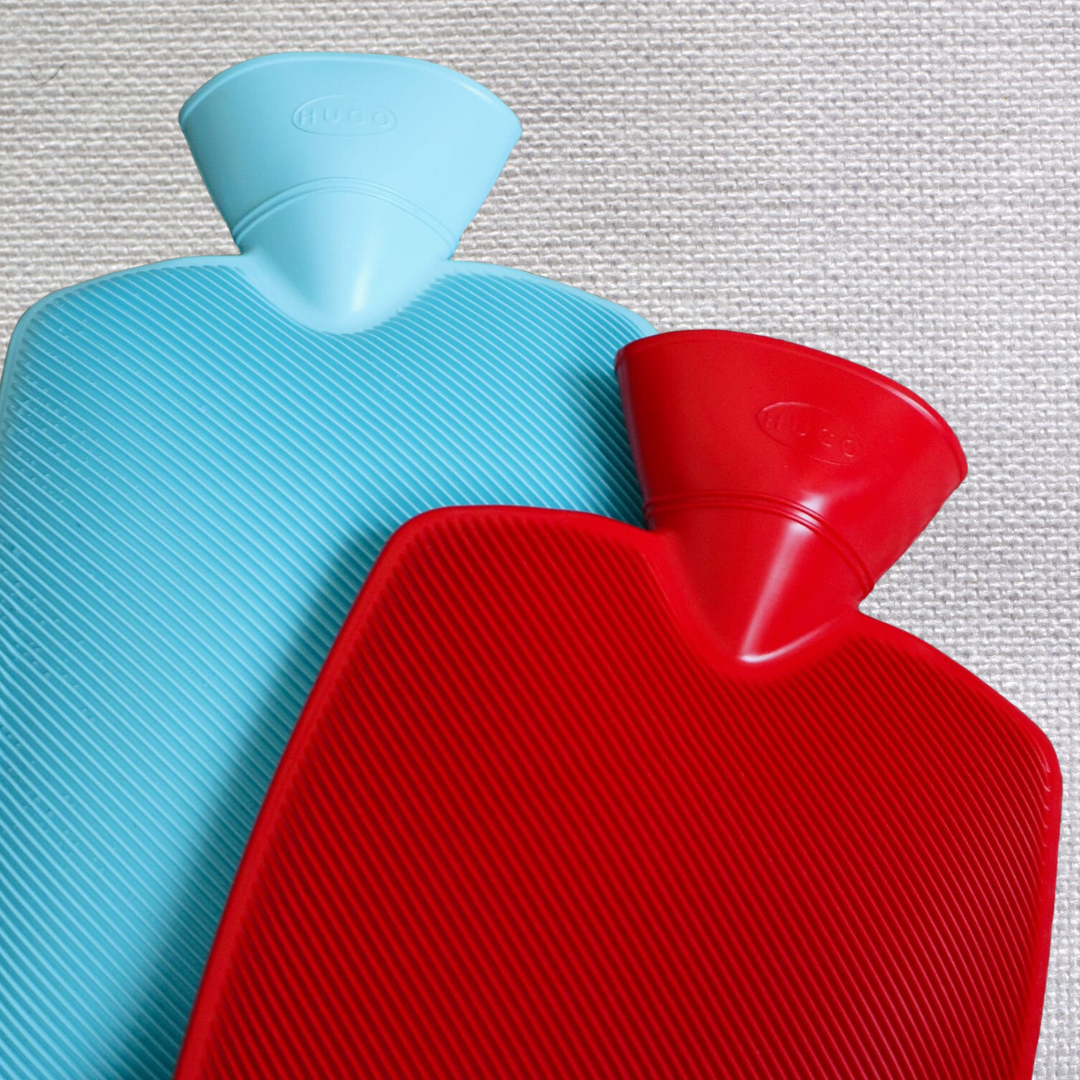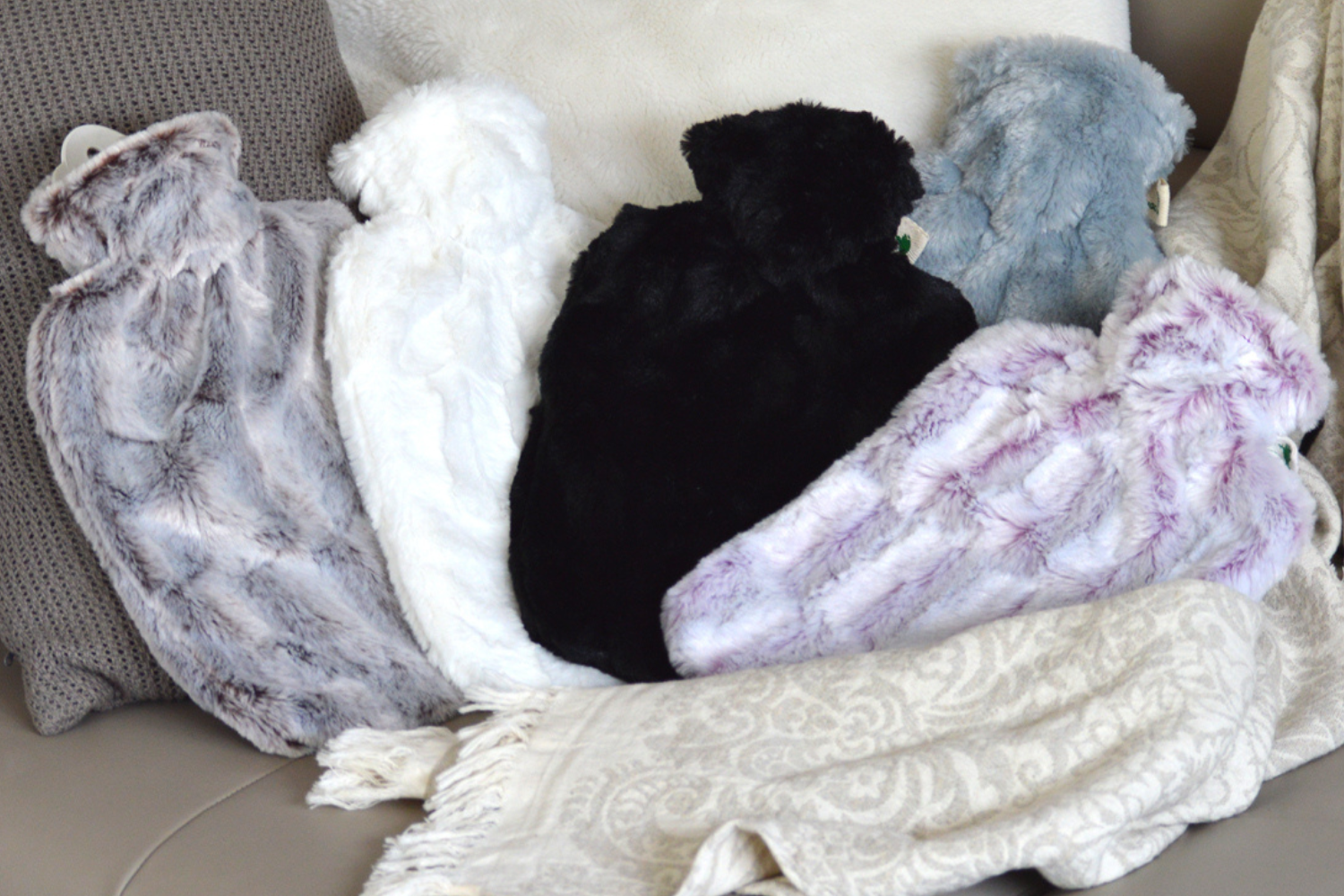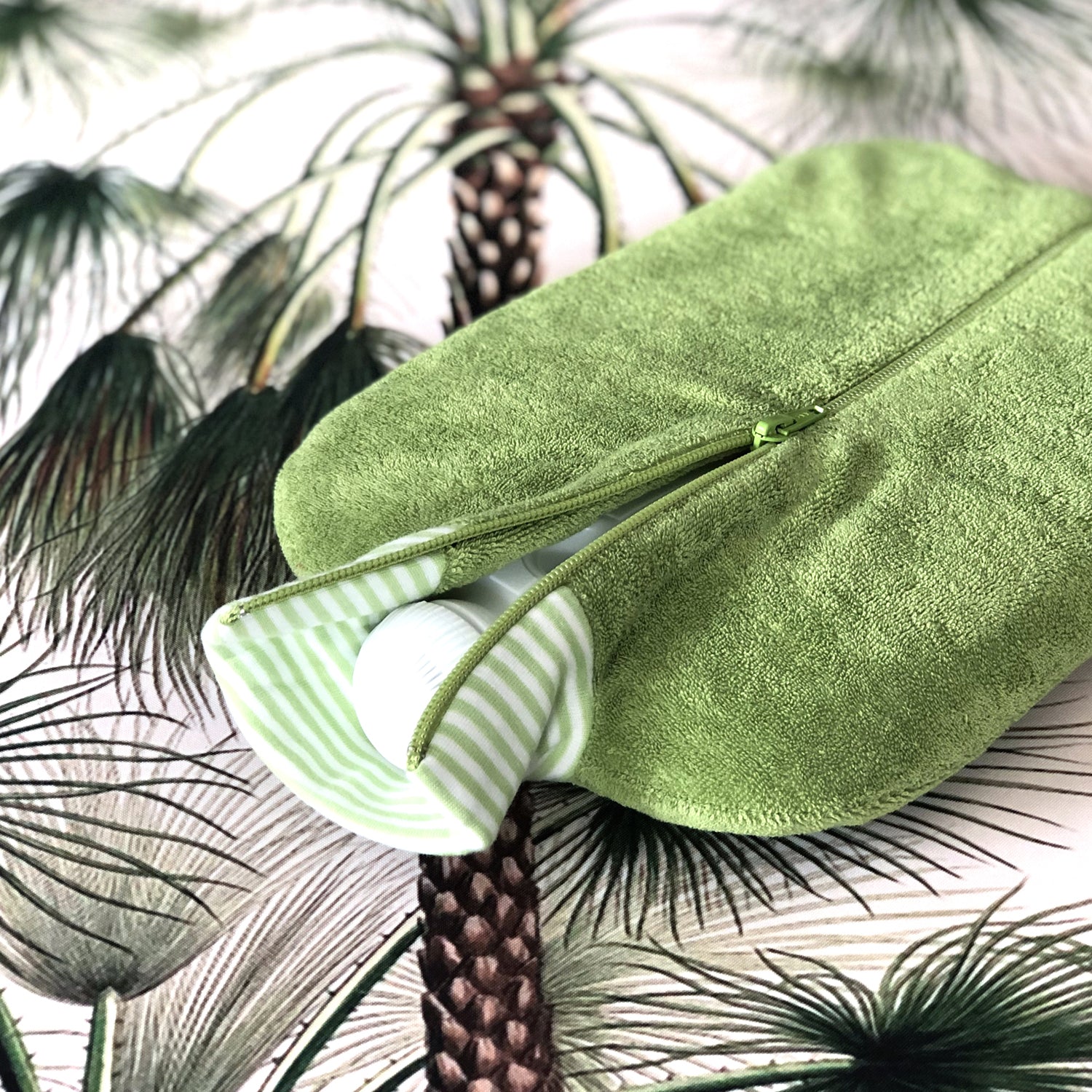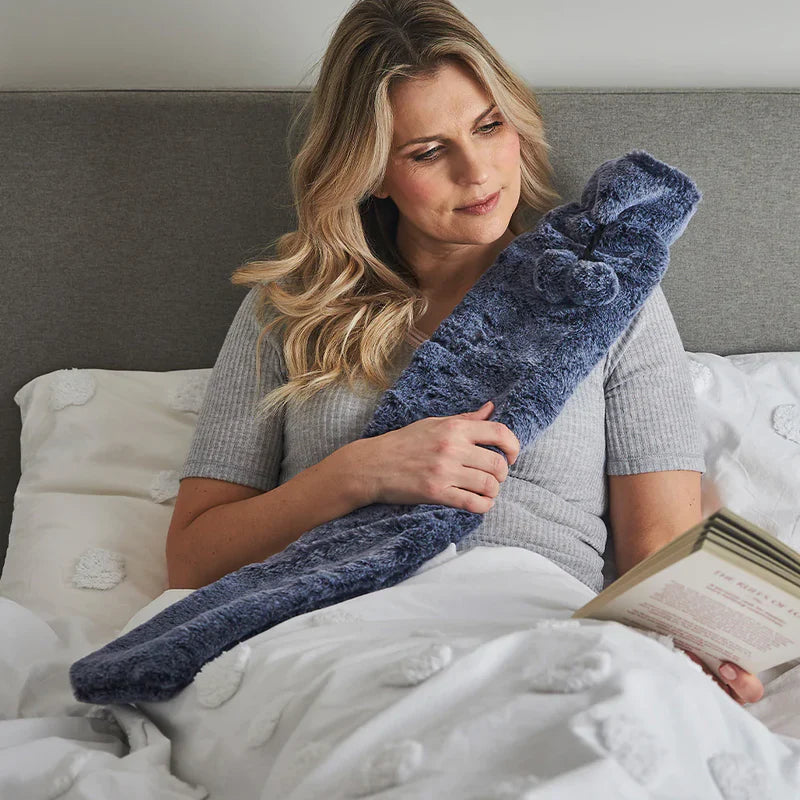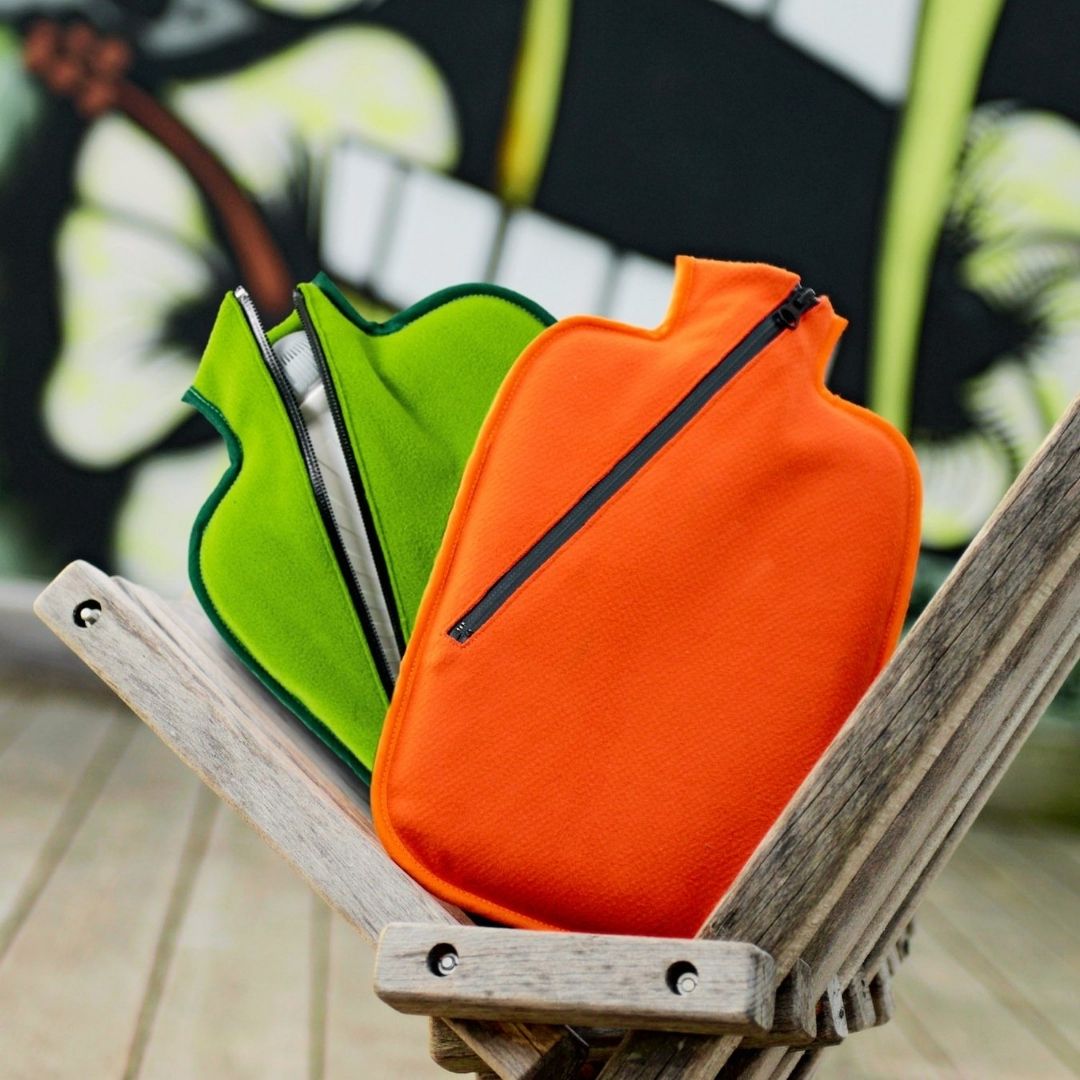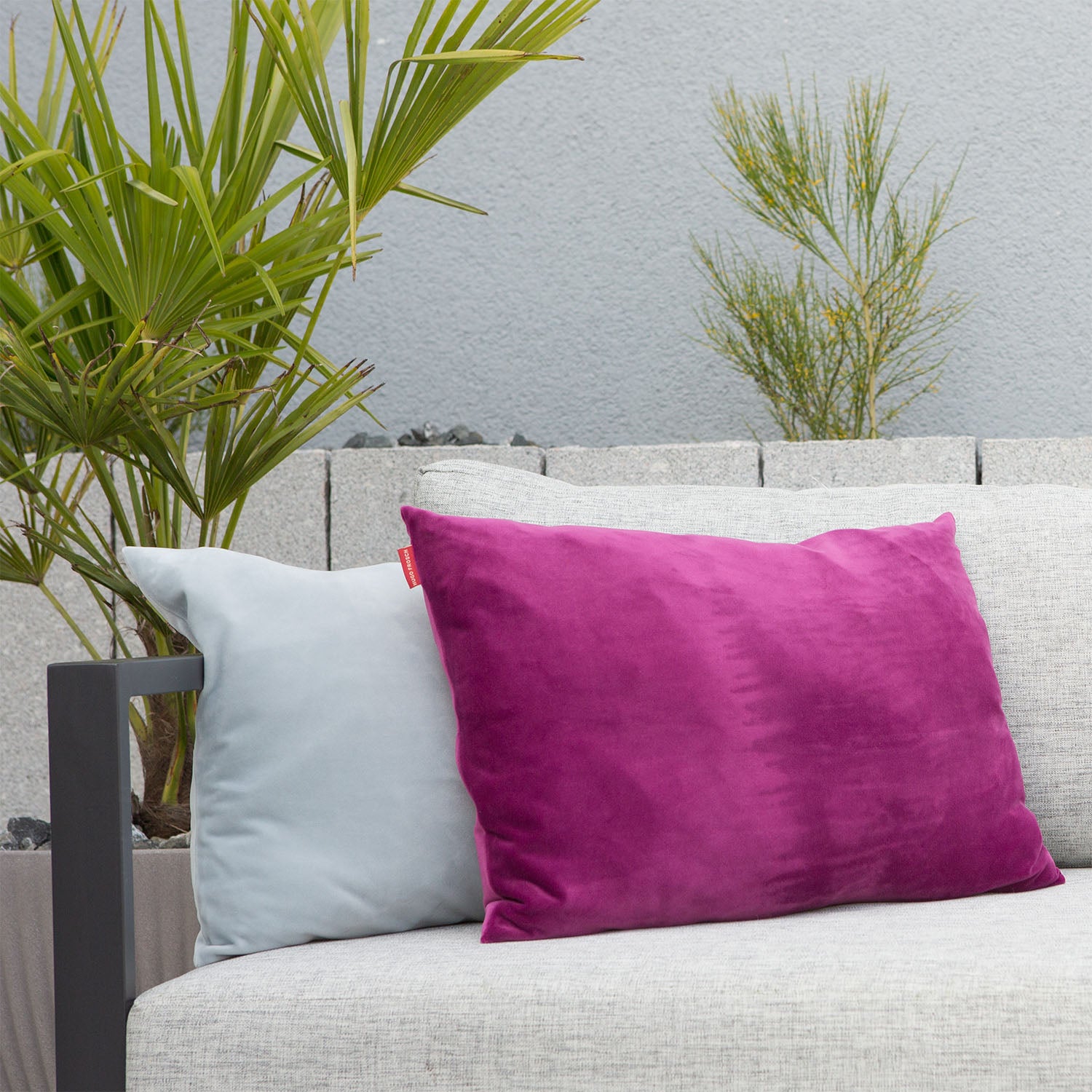The Essential Guide to Keeping Warm with a Hot Water Bottle
Popular sections:
How does a hot water bottle work?|How much money can you save?| How to choose the right hot water bottle?|How to check your hot water bottle is safe?|How to fill a hot water bottle?|Filling a hot water bottle safely video|Using a hot water bottle to stay warm|Using a hot water bottle to ease aches and pains|Using a hot water bottle to improve sleep and reduce stress|Young children and hot water bottles|Storing a hot water bottle
Purpose of Guide
Hot water bottles can be great for keeping you warm, whether it’s by warming up your bed in the winter, keeping you snug on the sofa while binge-watching a series or on a camping holiday in the summer.
In addition to keeping you warm, hot water bottles can save you money. They are also great for overall well-being, simultaneously helping you relax, relieve stress and menstrual pains, ease muscle tension, aches and pains, and get a good night’s sleep. All of these can be great for your short and long-term health.
That said, many people do not know how to get the most out of their hot water bottles safely and effectively and safely. In this guide, we shall walk you through everything you need to know about what you can use a hot water bottle for, and how to get the most out of yours, safely.
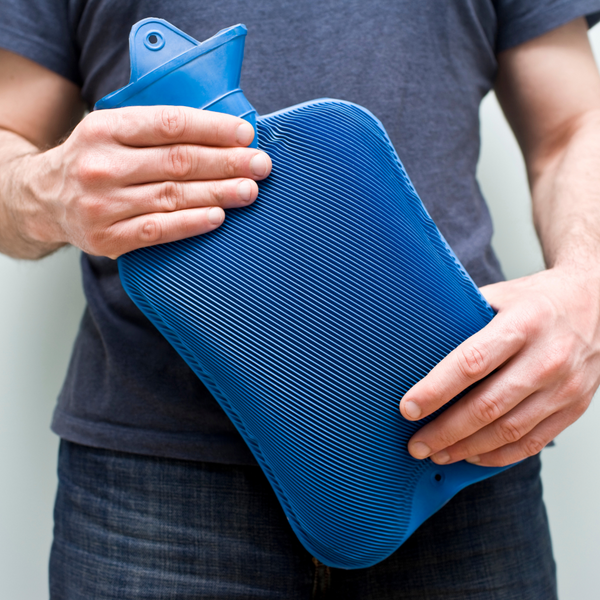
How Does a Hot Water Bottle Work?
A hot water bottle is a rubber or thermoplastic bottle with a hollow inner void into which hot water can be poured and stored. A screw cap lid or stopper is used to completely seal off the water from the surrounding air.
The rubber or thermoplastic bottle has insulating properties which prevent all the heat from the hot water from escaping right away. Instead, the heat is only able to escape gradually through the bottle and travels by convection to the surrounding air outside, enabling the user to benefit from a sustained release of heat over a long period .
Over time the hot water in the bottle cools down as more heat energy is released and dissipated until eventually it reaches the same temperature as the surrounding room. At this point, there is no longer a difference in temperature driving the heat from inside the bottle to the outside environment and it is time to refill your hot water bottle - if you haven’t already done so.
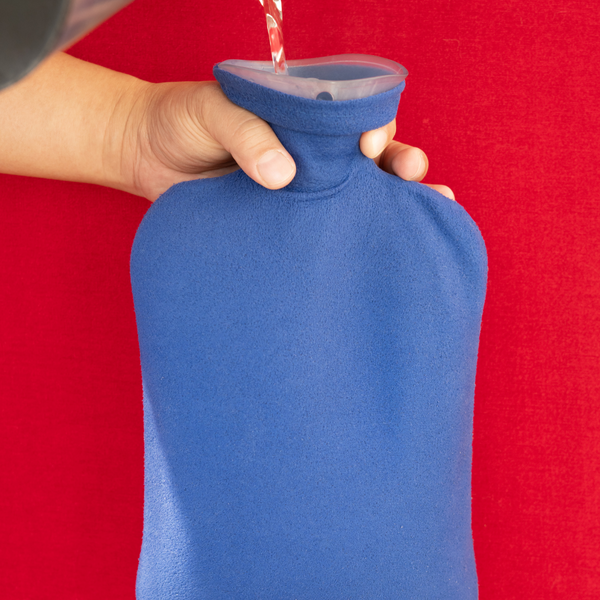
Saving Money and Energy with a Hot Water Bottle
Hot water bottles aren’t just about warmth and comfort - they’re a brilliant way to save on energy bills while also reducing your environmental footprint. In the face of rising heating costs, a hot water bottle offers a cost-effective solution to staying warm without relying solely on central heating.
How Much Can You Save?
We conducted a study to understand how much you could save by reducing your thermostat and using a hot water bottle.
The numbers speak for themselves.
Over a year, we estimate the cost of heating water for your hot water bottle is as little as £7.20. At the same time, a hot water bottle typically costs around £20-30 and can last several years.
Compare this with the savings from turning down your thermostat by just 2°C, which can reduce your heating costs by up to £894 annually for a typical detached home using electricity.
"Heating the Human, Not the Home"
Using a hot water bottle allows you to comfortably lower your thermostat without compromising warmth. Whether you’re working from home, unwinding on the sofa, or prepping for bed, a hot water bottle delivers direct and efficient heat.
Eco-Friendly Benefits
Lower energy consumption means fewer CO2 emissions. A reduction of just 1°C on your thermostat can cut household emissions by 237 kg of CO2 annually in a detached home.
By integrating hot water bottles into your daily routine, you not only cut costs but also play a part in a more sustainable future. It’s a win for your wallet, your comfort, and the environment.
Where to Buy Hot Water Bottles from?
Once you have identified the need to have one, it is natural to ask yourself where to buy hot water bottles from. Your local supermarket, hardware store, pharmacy and other health stores are likely to offer hot water bottles. Quite often the amount of choice will be limited and the available designs may be rather basic. Online stores like ours are great because we can offer a wider selection from the comfort of your home.
→ Shop now: Our hot water bottle collection
How to Choose the Right Hot Water Bottle?
These days hot water bottles come in all shapes and sizes and are made using a variety of materials. Therefore, it’s important to understand the pros and cons of each option and choose the right hot water bottle for your specific needs.
The main aspects to consider are size, material, shape and presence of an outer cover.

Size
A large hot water bottle, (which we define to be at least 1.5 litres in size) will be able to store more hot water than a smaller one and hence more heat energy. Due to the ratio between its surface area and water capacity, all other things equal, it can be expected to release heat over a longer period. This would result in you keeping warmer for longer.
Larger hot water bottles are effective when trying to apply heat to or soothe a region of your body such as your lower back as they can target a wider area at the same time. This said, once filled they can often be twice as heavy as a small hot water bottle so people who are not as strong such as the elderly need to take extra care. A full 2 litre hot water with a cover will typically weigh between 2 to 3kg.
Smaller bottles are lighter, easier to fill and easier to carry which means they are more effective at providing heat to a specific and localised area of your body especially when you need to lift and support it (e.g. if you are suffering from a stiff neck). Due to these properties, they are also preferred for keeping children warm.
Small hot water bottles or mini hot water bottles are also easier to look after and store. There is less risk of the hot water bottle becoming damaged as there is less material and less risk of burns and scalds. This is in part because they are lighter and fill time is shorter.
Material
Hot water bottles are usually made from rubber but can also be made of other materials such as thermoplastics. Although typically more expensive, thermoplastic hot water bottles can often be considered as more "eco-sustainable" as they are made from recycled and recyclable materials. Our eco hot water bottles are made from 90% recycled materials. Rubberless hot water bottles including thermoplastic products have the added benefit of not giving off an odour like some rubber ones.
Shape
Although most hot water bottles take on the familiar classic shape of a rectangular base with a neck at the top of one of its narrower sides leading to the cap, there are some more innovative designs which have been introduced in recent years. These modern hot water bottles have been either modified to improve their usability in certain scenarios or make them more visually appealing.
A notable example of a hot water bottle with an innovative shape is the heart shaped hot water bottle. Another is the long hot water bottle. They work just like typical hot water bottles but are a lot longer and narrower – taking the shape and appearance more of a long tube. This gives the long hot water bottle a lot more versatility and the ability to warm and soothe several parts of your body simultaneously, lie along a sofa, rest around your neck and soothe hard to reach areas such as your back. Although standard hot water bottles can be used for just about anything, extra long hot water bottles give you that extra versatility.
Outer cover
The cover, or lack of, is another important consideration. Nowadays there is a eclectic choice of covers to suit everyone's personal style including knitted covers, animal inspired hot water bottle covers and soft faux fur covers. Arguably the most exciting covers and a recent hot water bottle innovation are cushion covers for hot water bottles which are specially designed to store a hot water bottle inside. But don't worry you can still use a hot water bottle without a cover, however we still recommend wrapping it in a towel to prevent injuries.
How to Check Your Hot Water Bottle is Safe?
Before Purchase and First Use
You must inspect your hot water bottle on every occasion before you use it.
When purchasing a hot water bottle or using it for the first time, make sure it is compliant with the relevant British Safety Standards, BS 1970:2012 (which supersedes BS 1970:2006).
To be certain that your hot water bottle meets the British Standards you should be able to see BS 1970:2012 embossed on the bottle, typically around the neck or around the instructions.
In addition, you may also see a Kitemark or daisy like symbol on its surface if it is made by a British manufacturer. This symbol may vary depending on the country, for instance German hot water bottles may include a TUV or tick symbol in a square box.
Before Every Use
It's also important to check your hot water bottle including stopper for damage every time before you intend to use it.
Like any material, your hot water bottle is subject to wear and tear. Whenever you use a hot water bottle inspect the bottle and stopper for wear and damage including cracks, fading, or small holes.
Most hot water bottles will come with a maximum lifespan or expiry date - typically around 1-5 years from when you first used it - after which it must be discarded even if there are no signs of wear and tear.
Any maximum lifespan or expiry date should be measured based on the date of first usage not production. On some hot water bottles you may come across some reference to a date embossed on a hot water bottle, typically a year in the centre and week represented by dots. This is the date of production and is used primarily for production traceability.
Remember to always discard of damaged or expired hot water bottles to avoid accidents. If you are uncertain it is always best to use a different hot water bottle.
Don't forget that how you use it matters. If a hot water bottle is properly used and cared for, it can last for several years. But at the same time, negligent use like not emptying the water, heating it up in the microwave, or filling directly from a tap can speed up the hot water bottle decay
How to Fill a Hot Water Bottle?
The guidelines below are typical steps for filling a hot water bottle safely. However these may differ from one bottle to another, so it is important to read the instructions carefully.
Once you are happy that the hot water bottle is safe to use, unscrew the stopper and pour out any water left in inside. Ideally there shouldn't actually be any water present as it should be removed whenever you stop using it.
Fill your hot water bottle with boiled water that has been allowed to cool down to a safe temperature. Do not use boiling water or hot tap water as both can significantly shorten the life of the hot water bottle and adds to the risk of burns.
Hot water bottle manufacturers typically recommend using a temperature no higher than 50-60 degrees Celsius (and even lower for young children) which may take 10-20 minutes. Hot tap water may also contain impurities, otherwise removed during the boiling process. Similarly, do not attempt to heat a hot water bottle using a microwave, grill or oven.
Fill the water to no more than two-thirds capacity as overfilling may cause it to burst.
Once you have finished pouring the water in, slowly squeeze the remaining air out. Then screw the stopper back on making sure it's sufficiently tight to prevent leakage.
Finally, if necessary, use a towel or dish cloth to dry the hot water bottle and the stopper.
Avoid prolonged direct contact of your skin with the hot water bottle due to risk of scalding and burns. If you do not have a cover we strongly suggest wrapping your hot water bottle in a towel.
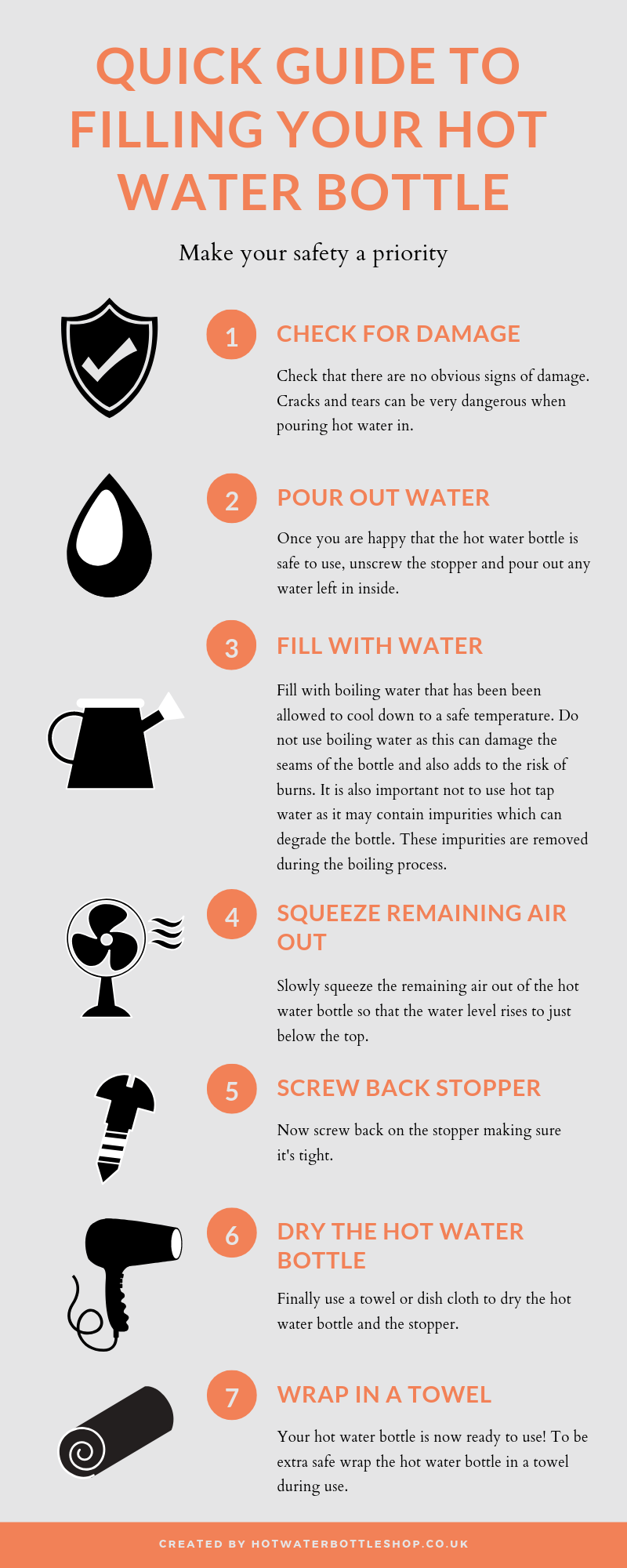
Filling a Hot Water Bottle Safely Video
What Are Hot Water Bottles Used for?
Traditionally the main use of hot water bottles has been for overall well-being including keeping warm, improving relaxation, relieving stress, easing pains and aches, as well as improving sleep. Although this is still largely the case, there are some other surprising benefits. It's also becoming increasingly popular to use your hot water bottle during meditation.
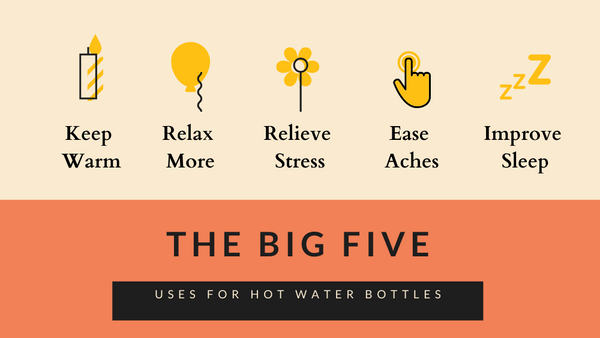
Using a Hot Water Bottle to Keep Warm and Relaxed
There are two main ways to keep you warm with a hot water bottle. The first is by resting it on or close to your body and the second is to use it to heat up the inside of your bed or sleeping bag before entering.
You can rest the hot water bottle close to or on you when in and around the house – for instance, when sitting down on the sofa. Furthermore, carry your hot water bottle with you when you are going for a leisurely walk during the winter months or when you are commuting to work on a chilly day. Never lean on, press against, sit on or add any excessive pressure to a hot water bottle including with your feet.
Hot water bottles are also great for keeping your bed warm when you are about to go to sleep. Simply leave the hot water bottle under your blanket for 5-10 minutes before you intend to enter. Don’t forget to remove the hot water bottle before you enter as there is a risk of injury or bursting once you enter (and fall asleep). Never use a hot water bottle in a bed fitted with an electric blanket.
During cold weather, in addition to using a hot water bottle, it's important to also take necessary steps to keep warm as well as eat well.
Using a Hot Water Bottle to Ease Aches and Pains
Many aches and pains including neck aches and muscle aches are common from time to time and, although a nuisance, are often nothing to be overly worried about. If problems persist or you are unsure, you should seek medical advice.
If you are suffering from an uncomplicated form of pain or ache then heat and cold products may be effective forms of treatment and relief. Many hot water bottles can double up to provide both forms of treatment with the freezer being used to cool down it down to an appropriate temperature.
Dr. Brian King from UCL says that, “Heat deactivates the pain at a molecular level in much the same way as pharmaceutical painkillers work." His research showed that when heat of over 40oC was applied to the skin it switched on heat receptors at the site of the pain. These temporarily blocked chemical messengers that caused pain to be recognised by the brain.
On the contrary, cold heat numbs the injury by narrowing blood vessels and slowing down blood flow. This in turn, reduces the build-up of fluid in the affected area. Cold is also believed to help with inflammation and swelling. It relieves pain but does not necessary treat the underlying cause.
Heat therapy is frequently used during rehabilitation, or when a person is suffering from deep tissue injuries, back, neck or muscle pain, joint stiffness, headaches or migraines. Heat has relaxing properties, helping to relax stiff and sore muscles and joints. Heat not only relaxes but also stimulates blood flow and improves circulation, thereby increasing your range of motion and reducing soreness and stiffness.
Heat therapy is not advisable for treatment of acute injuries or pain, as well as for inflammation, bruises and swelling. For these problems, it is advisable to use a cold treatment such as an ice pack or frozen wheat bag. Cold treatment is best for reducing post-exercise inflammation or pain. This is why you often see athletes having an ice bath following a game. Cold treatment is also effective when the injury is recent, red, inflamed or sensitive.
Simply fill your hot water bottle with ice cold water which can be obtained using the ice moulds in your freezer. Apply the water bottle to the affected area or areas for up to 15 minutes covering the bottle with a towel if there is already no cover. This will prevent injuries to your skin from prolonged exposure.
Here is a summary of which form of treatment may be most effective for your problems:

Using a Hot Water Bottle to Improve Sleep and Reduce Stress
Our modern way of life has led to higher levels of stress, anxiety and sleeping difficulties. It is a well-known fact that long-term stress and sleeping difficulties can have adverse consequences on an individual’s health. Although heat products such as hot water bottles cannot target the root causes of the stress and sleeping difficulties, they can be very effective as forms of relieving some of the symptoms. If problems persist for a significant period, then you would be best advised to seek medical advice.
The impact of stress and anxieties along with difficulties in sleeping can be reduced by using heat products such as a hot water bottle. The science behind this is quite simple: heat helps you to relax. It does this by stimulating blood flow and improving circulation around your body. Furthermore, heat also has the effect of making you more comfortable in your surroundings. Have you ever tried to fall asleep in a cold room? Hot water bottles can also be used to warm up your bed before you get in.
Generally, a single hot water bottle is sufficient for general blood stimulation around your body. It is important to remember that you should not forget to target the less obvious parts of your body such as your feet. A recent study by some Swiss scientists has shown that it is very difficult to have a good night’s sleep with cold feet.
Hot water bottles containing essential oils such as vanilla, lavender and rosemary, are also able to help fight against stress and sleeping difficulties. As these oils are warmed, they diffuse through the air which can help you relax.
For assistance getting to sleep, place a hot water bottle under your blanket at least 5 to 10 minutes before you intend to enter. Once you are ready to enter, you must remove the hot water bottle as there is a risk of bursting of scalding.
Alternatively, if you feel that you can’t sleep because it is too hot, you can place the hot water bottle or body warmer in the freezer for a few hours before placing it under the covers for 5-10 minutes. Once you are ready to sleep, you must again remove the product first.
Hot Water Bottles for Kids
Hot water bottles can be great for keeping the little ones in your life cosy and warm especially during cold weather. This said, extra care must be taken when using hot water bottles around young children. You must check the minimum recommended age if it is provided and take extra care to read and understand any instructions.
Children should always be supervised. Children and babies must never fill a hot water bottle themselves. They must never be left alone with a hot water bottle, and direct contact with the skin must be avoided. For use warming a child’s bed, remove the hot water bottle before the child enters the bed to avoid unintentional burns or accidents.
Always check the temperature of a hot water bottle to be used with children. Their skin is more sensitive than the skin of an adult and a lower temperature may be more appropriate - typically less than 42 degrees Celsius.
We also recommend that you place your hot water bottles in a safe place, out of reach from children, when not in use. As young children may unknowingly damage the hot water bottles if they come into contact with them.
Other Vulnerable People and Hot Water Bottles
In addition to children, helpless, sick or people who are not sensitive to heat (e.g. diabetics) should never be left alone with a hot water bottle without the presence of a responsible, supervising adult. If there's any doubt, ask your doctor before using the hot water bottle.
Storing a Hot Water Bottle
Remember it’s the little things you do every time you use your hot water bottle that will help it last longer.
After each use, it is important to empty the hot water bottle and if possible hang it upside down to dry. Only once the inside is completely dry should you remove it and store in a cool, dry and dark location with the stopper removed. Exposure to excess sunlight can cause oxidation, while storing a wet hot water bottle can cause mould to grow inside the bottle. You must also avoid contact with hot surfaces, household chemicals, oil or grease.
Once a hot water bottle shows signs of wear or damage it is important to discard it right away to prevent someone else from using it. For optimal safety, we also recommend replacing a hot water bottle every 2 years or as frequently as the instructions recommend, even if there are no signs of wear or damage.
Cleaning a Hot Water Bottle
Cleaning instructions vary from bottle to bottle, so it is important to read the instructions for your hot water bottle carefully before attempting to clean it. Some manufacturers suggest using tap water to clean the hot water bottle itself, whereas others suggest using typical household cleaning products. Refer to sewn in cleaning label or the equivalent for instructions on how to clean your cover.
Disposing Your Old Hot Water Bottle
Dispose of old hot water bottles together with normal household waste. If you are really struggling to throw your favourite hot water bottle away, then consider repurposing it into something useful like a tablet cover or a knee cushion.
That's All For Now...
Hot water bottles are great and effective ways of keeping you warm, reducing stress, easing aches, alleviating pains, and helping you sleep. This guide has covered how to get the best use out of yours safely and even how you can recycle them when you have stopped using them.


